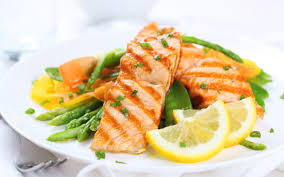Dieting in College without Counting, Part 2: The Set-Up
By Ari Snaevarsson, Features Editor
Last week, I promised you a simple method of successfully dieting in college without the additional stress of meticulous counting. Here, I will provide you with the basic set-up of the diet, followed by an explanation and more in-depth review of everything we have gone over. This specific method would be most useful for a dieter looking to lose fat or minimize fat gain during a bulk. I will probably be making an addendum later on, in which I cover accommodations for anyone prioritizing mass over leanness.
I should also give credit where credit is due. Daniel Frantz, owner of VnFit Training and Nutrition Coaching, worked with me in coming up with the method I have provided (shameless plug: if you are looking for more in-depth diet guidance from someone significantly more learned in the field than me, give his services some serious consideration).
This is nothing revolutionary, and none of what I have to say, continuous with my theme of dispelling diet myths, constitutes some magical weight loss or muscle gain formula. What follows is merely an effort to make scheduling meals more convenient, managing hunger more feasible, diet control less meticulous, and it may, anecdotally, help target stubborn fat by taking advantage of upregulated hormone levels at different times of the day. But I digress.
One final important point to mention: Please feel free to mold this to your individual schedule. The number one priority of yours in your dieting efforts should always be flexibility.
The Diet
Meal 1
-Aim to push this meal off until about noon (aka skip breakfast).
-A cup of black coffee (splash of skim milk is acceptable if necessary) taken a couple hours before this meal will help physiologically and psychologically suppress hunger, increase thermogenesis, and will provide a boost of energy you are no longer reliant on a big breakfast for.
-If you consider yourself a morning person, you would be well advised to push use of stimulants off until later in the day, closer to the meal.
-Caffeine, and other stimulants, work best on an empty stomach.
-For the meal itself, eat light.
-High protein, moderate fat, low carb
-i.e. A 200-pound man may have a protein shake with a small spoonful of peanut butter and a banana.
-Ideally, on days you exercise, this meal will precede your workout.
Meal 2 (Post-Workout)
-This will be your biggest meal and will ideally follow your workout.
-Very high in protein, high carb, low fat
-i.e. A 200-pound man may have a large protein shake, a 12-inch turkey sub, veggies, and some mixed fruit.
Meal 3
-This meal will occur roughly two hours after Meal 2 and will be your last meal of the day.
-Try to have it earlier on, not much later than 9pm.
-Again, eat light.
-Copying Meal 1 would not be a bad idea.
Explanation
You will notice my suggestion is to push your first meal back until around noon, or later if possible. While I would never suggest intermittent fasting is the end-all be-all of dieting and, admittedly, have only been using it myself for a matter of weeks, by and large it makes dieting a lot more psychologically and physiologically plausible. In a fasted state, not only do we see all sorts of important hormones shifted in the direction that favors fat loss (growth hormone, insulin, leptin, ghrelin, and cortisol, to name a few), but there may be some evidence pointing to increased mental alertness. This is great for anyone with morning classes, as this diet will allow you to capitalize on that increased productivity during periods of fasting.
Before your first meal, zero-calorie drinks and gum are permitted. Snacking should be avoided at all costs, but if you are really craving a snack, try to fit it in within your feeding window (within Meal 1 and Meal 3), and try to eat light.
Meal 2 is your biggest meal and, for me, demonstrates one of the best aspects of this method of dieting. Allowing yourself a meal where you can eat to your heart’s content does wonders for you psychologically, something I will touch on in much more detail in the third part of this series.
This rundown was an extremely surface-level summary and the main takeaway should be that dieting without counting calories or macronutrients is possible. All-or-nothing approaches have no place in maintaining a healthy lifestyle, and this is no exception. Just because you are unable to dedicate the time and attention to detail necessary to micromanage your diet does not mean all hope is lost.
In the next section, we will briefly discuss drinking and some tips to implement moderation without having to give it up entirely. Stay tuned!

